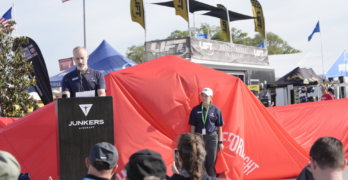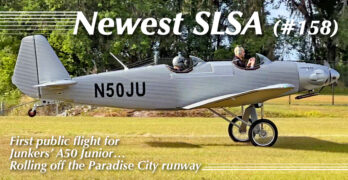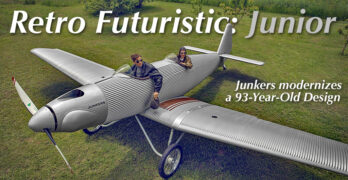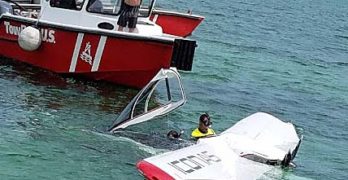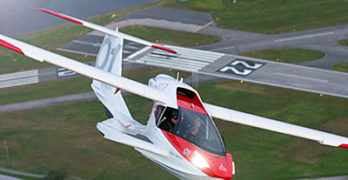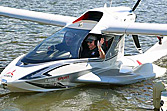Editor’s Note: This is a quick preview of the new A50 from Junkers we thought you should hear about ASAP. After we catch our breath, we’ll try to update the story with more detail on such things as pricing and availability. In the mean time, welcome Amy Wilder, editor of our sister publication Plane & Pilot, who is helping out here at Sun ‘n Fun.
Last year at Sun ‘n Fun, Junkers Aircraft Corp. unveiled its A50 Junior design, a revitalized take on the classic 1929 design by Hermann Pohlmann. The refresh featured the classic design, with a Rotax 912 engine.
Based on consumer feedback and requests, the company today unveiled its A50 “Heritage” model, which the company said in a release “meticulously captured the essence of Hugo Junkers’ imaginative and original design” with its Scarlett 7U radial engine and two-piece glass windscreen.
Stay tuned for a video of the press event from this morning’s unveiling at the expo.


